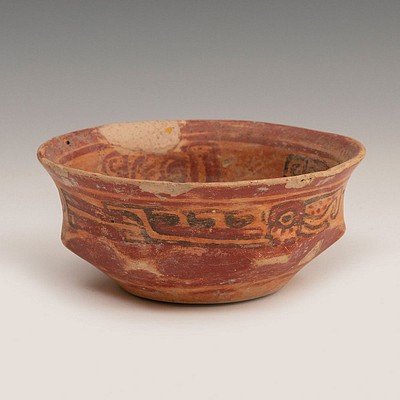Head, Rome, II-III centuries A.D. Marble.
Lot 193
About Seller
Setdart Auction House
Carrer Aragó 346
Barcelona
Spain
Setdart Subastas was born in 2004 and is currently the first online art auction in Spain with solidity, prestige and reliability guaranteed by our more than 60,000 users. Setdart has a young, dynamic and enterprising team ready to successfully manage the purchase and sale of art works through custom...Read more
Estimate:
EUR€200 - EUR€300
$215.05 - $322.58
Absentee vs Live bid
Two ways to bid:
- Leave a max absentee bid and the platform will bid on your behalf up to your maximum bid during the live auction.
- Bid live during the auction and your bids will be submitted real-time to the auctioneer.
Bid Increments
| Price | Bid Increment |
|---|---|
| EUR€0 | EUR€10 |
| EUR€200 | EUR€25 |
| EUR€500 | EUR€50 |
| EUR€1,000 | EUR€100 |
| EUR€3,000 | EUR€200 |
| EUR€5,000 | EUR€500 |
| EUR€10,000 | EUR€1,000 |
| EUR€20,000 | EUR€2,000 |
| EUR€50,000 | EUR€5,000 |
About Auction
By Setdart Auction House
Dec 23, 2021
Set Reminder
2021-12-23 04:30:00
2021-12-23 04:30:00
America/New_York
Bidsquare
Bidsquare : Archaeology, Session II
https://www.bidsquare.com/auctions/setdart-auction-house/archaeology-session-ii-8051
Setdart Auction House sofia@setdart.com
Setdart Auction House sofia@setdart.com
- Lot Description
Head, Rome, II-III centuries A.D. Marble. Measurements: 11,5 x 7,5 x 9 cm. Roman head in marble representing a man, looking towards his forehead with a serious and authoritative countenance. The work of the face stands out specially, of an idealized and precise naturalism, typical of the Roman sculpture. It is also worth noting the importance of the work of the hair, carved strand by strand to reflect its volume and movement. The portrait was one of the most original and characteristic manifestations of Roman art. The origin of the Roman portrait appears to be linked more to a concept than to a plastic expression, and reflects like no other artistic genre the vital philosophy of that people. In its formation it is possible to detect three roots: the Etruscan-Italic, the Greek and the autochthonous current of the "maiorum imagines" or funerary masks. The combination of all of them will result in an unmistakable and genuine work that, despite the logical differences gradually imbued by the provincial workshops, will evolve in parallel in all the territories of the Roman Empire. It is a work dated between the 2nd century AD and the 3rd century AD. The second century was a period in which Roman sculpture advanced towards a growing baroque style that would culminate in the following century. The hair, for example, is worked longer and separated from the head, with curls or very bulky locks, expressing a greater dynamism than in previous periods. The Romans brought two important innovations to the world of sculpture: portraiture and historical relief, neither of which existed in the Greek world. However, they followed Greek models for much of their sculptural production, a base that in Rome would be combined with the Etruscan tradition. After the first contacts with the Greece of classicism through the colonies of Magna Graecia, the Romans conquered Syracuse in 212 BC, a rich and important Greek colony located in Sicily, adorned with a large number of Hellenistic works. The city was sacked and its artistic treasures taken to Rome, where the new style of these works soon replaced the Etruscan-Roman tradition that had prevailed until then. Cato himself denounced the sacking and decoration of Rome with Hellenistic works, which he considered a dangerous influence on native culture, and deplored the Romans' applauding of statues from Corinth and Athens, while ridiculing the decorative terracotta tradition of ancient Roman temples. However, these oppositional reactions were in vain; Greek art had subdued Etruscan-Roman art in general, to the point that Greek statues were among the most coveted prizes of war, being displayed during the triumphal procession of the conquering generals.
- Shipping Info
-
In-house shipping available. Please inquire at admin@setdart.com.
-
- Buyer's Premium



 EUR
EUR CAD
CAD AUD
AUD GBP
GBP MXN
MXN HKD
HKD CNY
CNY MYR
MYR SEK
SEK SGD
SGD CHF
CHF THB
THB















